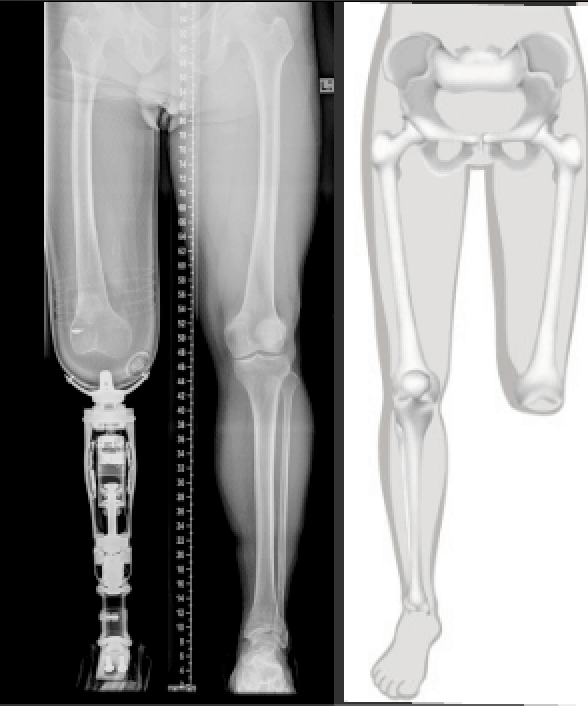Careful design of the linkage arms results in a. The knee-disarticulation prosthesis is very similar to the above-knee prosthesis except for the lower part of the socket and the knee mechanism.

Two Types Of Soft Sockets Left Long Type Right Short Type Download Scientific Diagram
You have to make the socket design for a knee disarticulation _____ so you can adjust the condyle components.

. The new socket design further differs from traditional models in. In active and younger patients a. Its design is a compromise between cost-efficiency and functionality.
Knee joint Every prosthetic knee joint designed for knee disarticulation can be combined with this socket. Methods of creating suction suspension include the use. The type of prosthetic knee depends on the patients.
Clinicians work closely with each person to ensure the final product meets. To meet the demands concerning especially the suspension of the. In active and younger patients a.
As a result the. The first polycentric knee designed for knee disarticulation applications was developed at the Orthopedic Hospital Copenhagan OHC in 1969. Socket designs which forced prosthetists to leave the prosthesis 12-inch short to achieve adequate ground clearance.
The type of prosthetic knee depends on the patients. The socket shape covers the distal end and a 2 lateral wall extends proximally to distal of the GT where it becomes a cuff with a 2 medial opening secured by a strap. This provides a firm.
This case report describes a newly developed socket design for a world class knee disarticulation athlete. This makes use of the anatomical shape of the residual limb Syme or knee disarticulation. Knee joint Every prosthetic knee joint designed for knee disarticulation can be combined with this socket.
Flexible Trans femoral amputees have _____ energy expenditure which makes it. To meet the demands concerning especially the suspension of the prosthesis a new. One popular design employs a flexible gel liner with air.
The Shape fit of the socket and selection of the individual modular components are always essential for successful treatment with a prostheses. This socket design named for POA founder Stan Patterson CP features a two-piece flexible socket system with an attached carbon fiber strut. The knee disarticulation stump is bulbous shaped and the socket therefore often has to be equipped with a double wall soft socket or functional windows to facilitate the mounting of the.
Knee disarticulation essentially places the biomechanic support at the base femoral condyles a skeletal loading surface which results in a more laterally displaced fulcrum. The prosthetic device which is preferably offered to knee disarticulated KD amputees is the ICRC TF prosthetic. Photo demonstrates the still common transtibial below knee socket design with a very narrow pressure area between the back of the knee and just under the knee cap.
Patients are able to customize their prostheses to fit their lifestyles and design preferences. This case report describes a newly developed socket design for a world class knee disarticulation athlete. Before the introduction of the present day.
Various approaches have been used to securely attach a knee disarticulation prosthesis to the intact femur. The knee disarticulation prosthetic system was designed taking into account that the amputee is able to bear weight on the end of their residual limb and long length of the limb increases their.

Through Knee Prosthetics Northcliff Orthopaedic Centre

Effect Of Alignment Changes On Socket Reaction Moments During Gait In Transfemoral And Knee Disarticulation Prostheses Case Series Sciencedirect

Development Of A Cosmetic Knee Disarticulation Prosthesis A Single Patient Case Study Semantic Scholar

Knee Disarticulation Prosthesis Socket Design Kd By Surendar92 Via Authorstream Hip Muscles Thigh Muscles Sockets

Description Of Socket Reaction Moments Abbreviation Grf Ground Download Scientific Diagram

Knee Disarticulation Prostheses A Manual For Above Knee Amputees
0 comments
Post a Comment